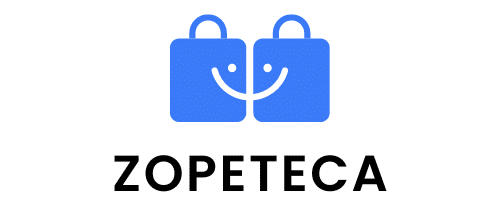As property developers, you may have heard about the numerous benefits of green buildings. These benefits range from environmental to financial, and can significantly improve the sustainability and performance of your projects. However, obtaining certification for green buildings can be a daunting task, especially when it comes to financing. Thankfully, numerous innovative approaches have emerged over recent years to address this issue. This article will explore these strategies, from new financial models to partnerships with environmental organizations.
Financial Models and Instruments
Financing green building projects can be challenging, particularly for smaller property developers who do not have substantial capital. However, a range of financial models and instruments have been designed to support developers in achieving green building certification.
Lire également : How to ensure the security of IoT devices in smart home systems within real estate properties?
One such approach is green bonds, a type of fixed-income instrument that is specifically meant to raise money for climate and environmental projects. These bonds work similarly to traditional bonds, but they are designated for green projects. They provide an opportunity for investors to support environmentally friendly initiatives while also benefiting from the financial returns.
Another innovative approach is the use of energy service companies, or ESCOs. These organizations offer energy services to property developers, financing the upfront costs of energy-efficient installations and systems in return for a share of the energy savings. This model not only helps developers attain green building certification but also reduces their long-term operational costs.
A découvrir également : What are the advantages of incorporating communal kitchens in urban apartment complexes?
Partnerships with Environmental Organizations
Partnering with environmental organizations can be a beneficial strategy for property developers seeking to finance green building certification. These organizations often have resources and funding available to support green initiatives. They also have a vested interest in promoting sustainable construction and design, which aligns with the goals of green building projects.
For instance, organizations like the Leadership in Energy and Environmental Design (LEED) offer certification programs and provide resources for developers looking to build green buildings. Moreover, some of these organizations offer grants and financial assistance to projects that meet certain environmental standards and sustainability goals.
Government Initiatives and Incentives
In many regions, government initiatives and incentives are available to encourage the development of green buildings. These incentives can come in various forms, including tax credits, grants, and low-interest loans.
For instance, in the United States, the Federal Energy Policy Act provides tax deductions for qualifying energy-efficient commercial buildings. Also, various states and cities offer additional incentives for green building projects.
In Europe, the European Investment Bank provides loans and advisory services to support sustainable development. Additionally, many countries offer national incentives, such as the UK’s Green Deal, which provides loans for energy-efficient home improvements.
Green Building Investment Funds
Another innovative approach to financing green building certification is through green building investment funds. These funds specifically invest in projects that aim to reduce the environmental impact of buildings.
Green building investment funds operate by pooling resources from a variety of investors. These resources are then used to finance green building projects, providing developers with the funds they need to achieve certification. Additionally, these funds offer a return on investment for the contributors, making it a financially viable option for all parties involved.
Crowd-Sourced Funding
Crowd-sourced funding, a relatively new concept in the field of property development, is proving to be a successful approach to finance green building certification. This method involves raising small amounts of funds from a large number of individuals, typically via the Internet.
This approach can create a broad base of support for green building projects, not just financially but also in terms of public awareness. It allows individuals who are passionate about environmental sustainability to contribute directly to projects that uphold these values. Moreover, crowd-sourced funding can even serve as a marketing tool, promoting the project and attracting potential tenants or buyers.
In conclusion, property developers have a wide range of innovative financing options available to them when it comes to obtaining green building certification. From green bonds and ESCOs to partnerships with environmental organizations, government incentives, green building investment funds, and crowd-sourced funding: each of these strategies offers unique benefits. It’s all about finding the approach that best suits your project’s needs and potential.
Innovative Financing Through Real Estate Investment Trusts (REITs)
Real Estate Investment Trusts (REITs) are another innovative approach to financing green building certifications. REITs are companies that own, operate, or finance income-generating real estate. They allow investors to pool their resources and invest in large-scale, income-producing real estate, which can include green buildings.
For property developers, this can provide an accessible and efficient source of funding. Rather than sourcing all the capital themselves, developers can raise funds from investors who are interested in supporting environmentally friendly real estate projects. This can be particularly beneficial for smaller developers or those who are new to the industry.
The benefit for investors is that they can participate in real estate opportunities without having to directly buy or manage properties themselves. The potential for returns is also attractive, with REITs required by law to distribute at least 90% of their taxable income to shareholders annually.
Moreover, because REITs are traded on major stock exchanges, they offer strong liquidity – a significant advantage for investors. Also, investing in green buildings through REITs can be a way for investors to contribute to the fight against climate change and promote sustainable development.
In addition, the Living Building Challenge, a green building certification program and sustainable design framework, recognizes REITs as an important means of promoting energy efficiency and renewable energy in the real estate sector. By meeting the Challenge’s rigorous standards, developers can obtain a recognized and respected green building certification.
Blended Finance for Green Building Projects
Blended finance is an innovative financial approach that has gained traction in recent years. It involves combining capital from public or philanthropic sources with private sector investment to finance sustainable development projects, including green building projects. The aim is to use the public or philanthropic funds to de-risk and leverage private sector investment.
In the context of green building certification, blended finance can offer a compelling solution. Public or philanthropic capital can be used to cover the upfront costs of obtaining certification, reducing the financial risk for private sector investors. Once the building is operating and generating revenue, the private sector investors can achieve a return on their investment.
Furthermore, blended finance can help to bridge the gap between the need for green buildings and the current level of private sector investment. By leveraging public or philanthropic funds, it can unlock additional private sector capital that might not otherwise be available for green building projects.
As a property developer, blended finance can provide an effective way to secure the necessary funding for green building certification. It can also demonstrate to investors that your project is backed by a robust financial model and that it contributes to sustainable development goals.
Conclusion
In the face of climate change, the demand for green buildings is growing rapidly. However, the cost and complexity of obtaining green building certification can be significant. Property developers, therefore, need innovative financing solutions to meet this challenge.
We’ve explored a range of these solutions in this article, from green bonds and energy service companies to partnerships with environmental organizations, government incentives, green building investment funds, crowd-sourced funding, Real Estate Investment Trusts, and blended finance.
Each approach offers its own benefits and challenges, and the best choice will depend on the specific circumstances of your project. However, what’s clear is that there are numerous options available, and by leveraging these innovative financing strategies, property developers can make green buildings a viable and profitable part of their portfolio.
In the words of the Green Building Council, "Green building is the cornerstone of a sustainable future, and financing is the lifeblood of any building project." With the innovative financing models discussed in this article, property developers are better equipped than ever to contribute to this sustainable future.






